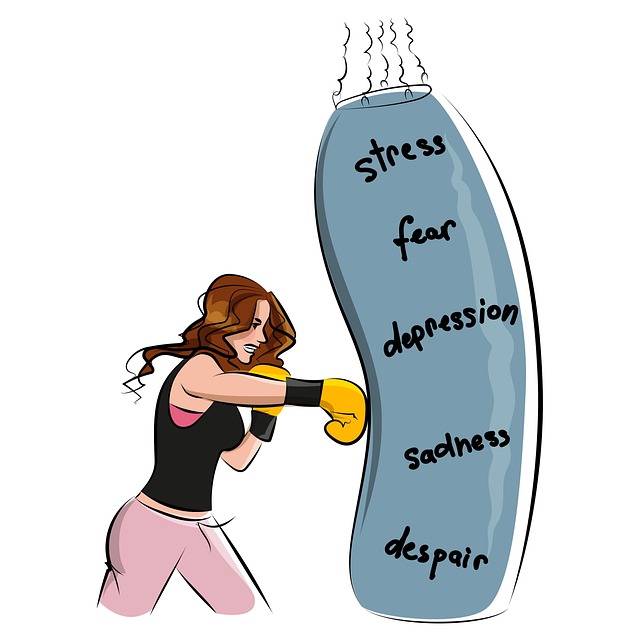Mental wellness journaling combined with American Sign Language (ASL) offers a powerful therapy for young children, enhancing communication, self-expression and emotional literacy through creative outlets. This approach, incorporating visual-spatial language, benefits kids who struggle with traditional writing, fostering improved coping skills and self-awareness. Structured daily prompts, including describing activities or emotions in ASL signs and words, stimulate creativity and reflection, boosting confidence and understanding of oneself and surroundings. Community journaling groups further support peer connections and empathy development, making this dual-approach a valuable tool for mental wellness among young children.
Mental wellness journaling is a powerful tool for young children to explore their emotions and thoughts, offering a creative outlet for self-expression. This article guides parents and educators through effective strategies, focusing on understanding the benefits of journaling, incorporating American Sign Language (ASL) for non-verbal communication, and creating structured exercises tailored to children’s needs. By fostering creativity and self-reflection, these practices can enhance emotional intelligence and serve as a therapeutic approach for young minds.
- Understanding Mental Wellness Journaling for Young Children
- Benefits of Using American Sign Language in Journaling
- Creating a Structured Journaling Exercise
- Encouraging Creative Expression and Self-Reflection
Understanding Mental Wellness Journaling for Young Children

Mental wellness journaling can be a powerful tool for young children to explore and express their emotions, especially when combined with therapeutic techniques like American Sign Language (ASL). Unlike traditional writing, which may pose challenges for early learners, this alternative approach allows kids to communicate their mental health experiences through drawing, signing, or even coloring. By encouraging them to visually represent their feelings, we tap into a non-verbal form of expression that can be particularly effective in fostering mental health awareness and positive thinking.
Journaling prompts tailored for young children should focus on simple, fun activities that promote self-discovery. For instance, they could draw a picture of their favorite place and describe why it makes them feel happy or safe. This process helps develop social skills training by encouraging kids to reflect on their interactions with others and express how those relationships contribute to their well-being. Through these creative outlets, children can build emotional literacy, gain a better understanding of their internal experiences, and learn healthy coping mechanisms at an early age.
Benefits of Using American Sign Language in Journaling

Incorporating American Sign Language (ASL) into journaling offers unique advantages, especially for young children undergoing therapy. ASL serves as a powerful tool to enhance communication and self-expression, allowing individuals to convey complex emotions and thoughts more effectively. This visual-spatial language can be particularly beneficial for those who struggle with traditional written expression, making it an accessible form of therapy for kids. By encouraging the use of ASL in journaling, therapists can facilitate improved coping skills development and self-awareness exercises.
The benefits extend beyond young children; healthcare providers can also benefit from adopting this strategy as a burnout prevention strategy. ASL promotes active engagement in the therapeutic process, fostering a deeper connection between the individual and their thoughts. This method encourages mindfulness and emotional regulation, which are crucial aspects of overall mental wellness.
Creating a Structured Journaling Exercise

Creating a structured journaling exercise can be an incredibly beneficial therapy for young children, especially when incorporating American Sign Language (ASL) to enhance communication and expression. This approach combines the power of self-reflection through writing with the visual and kinesthetic elements of sign language, making it engaging and accessible. Start by establishing a routine; encourage children to journal at the same time each day, fostering consistency and a sense of calm. Provide prompts tailored to their age and interests, such as describing their day, expressing emotions, or sharing aspirations.
For instance, a simple prompt like “Use ASL to sign about your favorite activity and why it makes you happy” can spark creativity and provide an outlet for children to communicate beyond words. This exercise not only aids in anxiety relief but also boosts confidence as they learn to articulate their thoughts and feelings. Moreover, the community outreach program implementation of journaling groups can create a supportive environment where young individuals share experiences, fostering peer connections and empathy.
Encouraging Creative Expression and Self-Reflection

Encouraging creative expression and self-reflection through mental wellness journaling can be a powerful therapy for young children. By incorporating American Sign Language (ASL), this exercise becomes even more engaging and accessible. Children often express themselves best through art, drawing, or writing, and ASL adds another dimension to their emotional release. It allows them to communicate feelings that might be difficult to articulate verbally, fostering both creativity and self-awareness.
This dual approach—creative expression and self-reflection—not only enhances stress management but also boosts confidence. Mental wellness journaling exercise guidance tailored for young children should include activities that encourage them to depict their day or emotions in ASL signs alongside written words. This method promotes a deeper understanding of themselves and the world around them, helping to build resilience and cope with challenges more effectively.
Mental wellness journaling, incorporating techniques like American Sign Language (ASL), offers a powerful therapy for young children. By fostering creative expression and self-reflection, these structured exercises can significantly contribute to their emotional development. Understanding mental wellness journaling’s benefits and implementing guidance on ASL integration allows parents and educators to create safe spaces for children to explore and communicate their feelings effectively.











